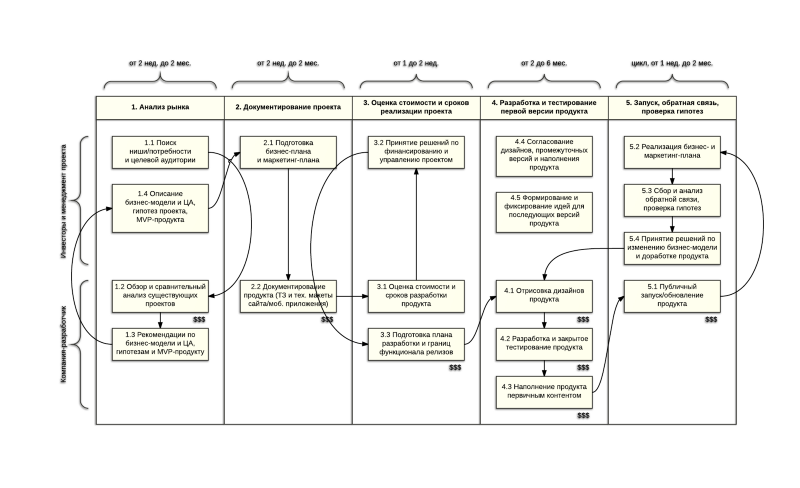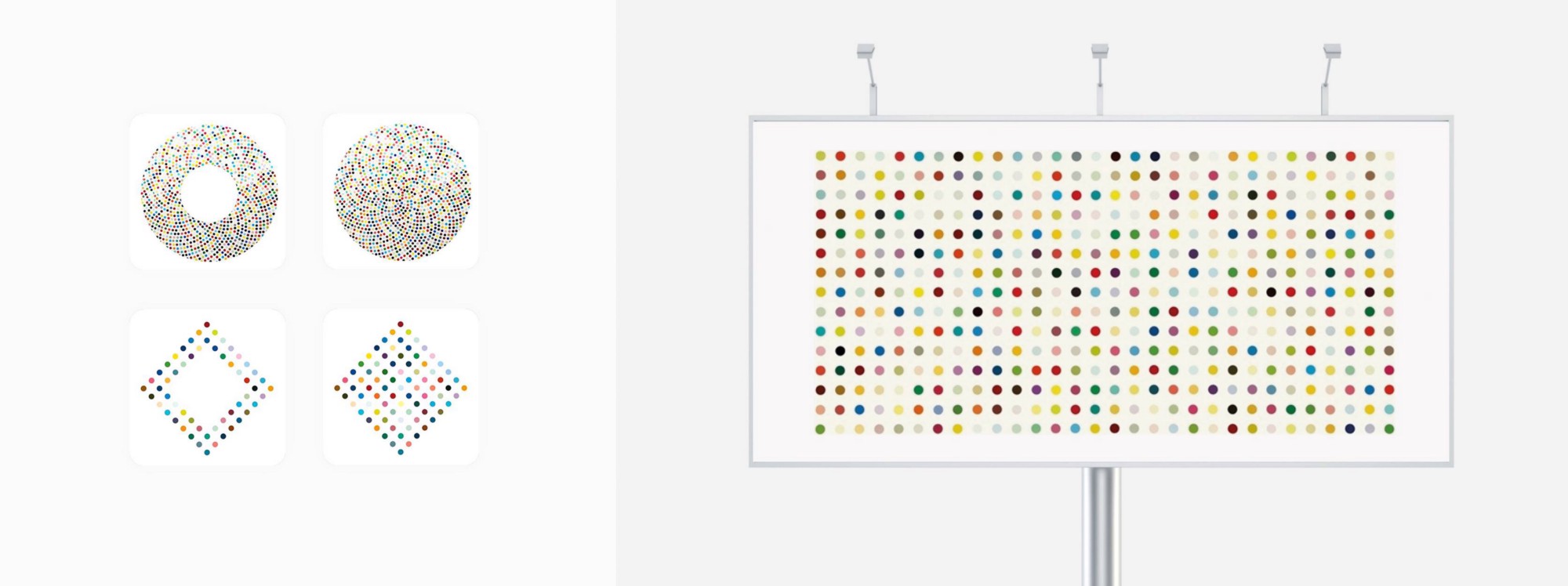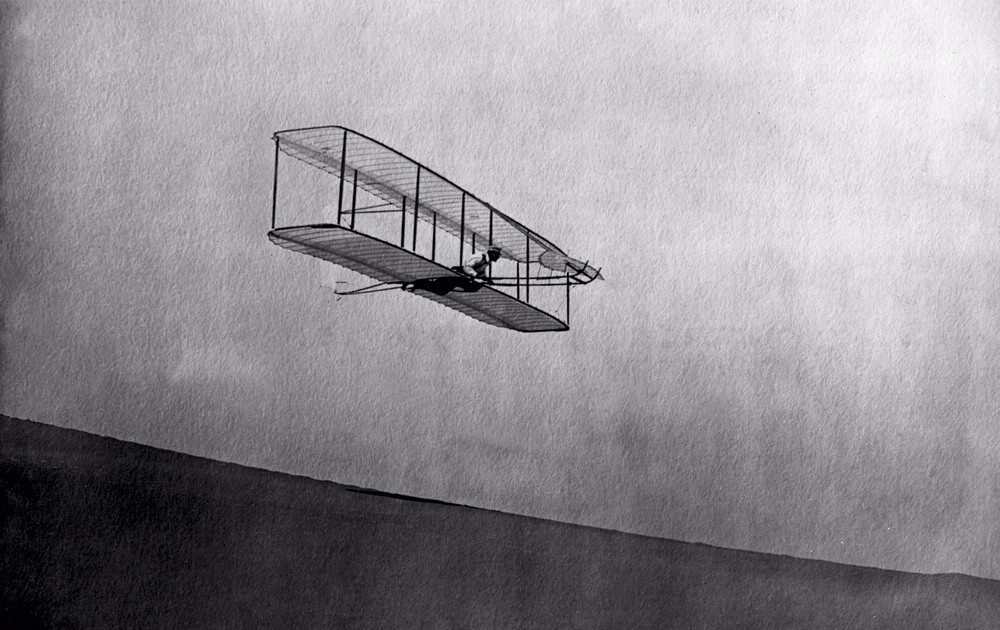What are the next steps?
Over the past two years of the team’s existence in dealing with clients, it was possible to identify a number of key questions, the answers to which determine the fate of the project. These questions gradually formed into checklists, similar to those used by pilots to check all aircraft systems before starting the engine.

Communication with the client fits into several independent stages with their own nuances and results in each. The stages and questions add up to an understanding of the business process or, if you will, the project roadmap.
')
The goal of the post is to create an understanding of the process of working on a project with our (and not only) clients, so that we can speak the same language at the start.
Once we drew such a map.

It is designed to manage customer expectations in terms of time, phases and objectives, results and cash tranches. Map elements are adapted to the client and the project, taking into account the scope of work, the pace of communication and the speed of decision-making.
The first key idea that we convey to the client at the start is the success of the project due to the high organization of work on both sides - the client and the performer.
The map illustrates this relationship well. However, today we will go further and write down the stages and questions in more detail. So, all communications fit into the following stages:
Acquaintance with the product and the client team often begins with the question “hello, how much does it cost for you to make a website (or a mobile application)?”, From our side there are some counter questions:
It is always a pleasure to work with a client who has already done “homework” and is ready to answer key questions. However, more often the client begins to communicate with the idea in a raw / blurry form, which requires serious study before proceeding to the implementation phase.
We help the client in search of answers even before we hit our hands and see the first tranche on the account.
As a rule, we start with a review of the market and existing products based on open sources. If more detailed analytics is required, we make it out as part of the next stage.

At the acquaintance stage, the client assesses us as a team in terms of experience and portfolio, technology stack and working conditions. For our part, we evaluate the client’s experience, the idea and the context in which it was born.
The result of the acquaintance is an understanding of the product and tasks, as well as the fundamental interest to work further.
Analytics, consulting and documentation
The name of the stage seems to hint that it combines tasks in finding answers to key questions about the project / product:
The scope of work of the stage is coordinated with the client individually, based on the work done and the time resource that the client has. We are happy to take on the tasks of analytics, but we try to leave the key role in the search for answers to the client, since it is the client that “burns and lives” with his idea.
The client is able to work out many questions independently. For example:
Rate the market through the search for articles and services / stores statistics:
Look at analogues and competitors:
Build a business model:
Survey potential users:
After evaluating the market and competitors, understanding and documenting the business model, we turn to the product vision.
The second key idea is that each project (especially a startup) operating under uncertainty solves the problem of testing hypotheses in relation to the market, the target audience, problems and the chosen solution.
With this approach, every aspect of the client’s vision is questioned and subject to either confirmation or refutation, and the product itself is perceived not as an end goal, but as an implementation of the chosen solution and a tool for testing hypotheses.
The third key idea is first a business / marketing plan, and only then a product.
The product implements scripts and user cases embedded in the description of the target audience and the chosen solution, and is a consequence of the ideas about user behavior. Useful products are created with a focus on users, but not on interface elements. You can read more about this approach, for example, here: www.newfangled.com/how-to-tell-the-users-story .
Also, the product carries the elements of functionality and content necessary for the implementation of a business model, business / marketing plan. That is why the monetization model should be thought out as early as possible so that you do not have to redo the product on the fly, shifting the time frame and spending extra money.
An important aspect of the stage is the documentation of the product. Without documentation, only a conditional estimate of the cost and development time is possible, which is often adjusted when specifics appear.
As a starting point, we take any form of documentation that a client has:
As the vision of the product is detailed as a result of analytics, we supplement the client's source documentation with new materials. Interactive prototypes of the product are prepared in proto.io/ and www.invisionapp.com . Smart Cards - www.mindmeister.com and www.lucidchart.com .
Often there are projects where documenting a product is perceived as side activity. Product description exists in the form of a pile of electronic and paper notes, at best - in the task tracker. This leads to the fact that the “heap of notes” is difficult to keep up to date, managers and developers get confused, incorrect estimates of labor costs are given, deadlines are being broken.
It should also highlight the aspect of testing . If the product gets actively developed after the public launch of the first version, it will need to be actively and orderly “finished” on the fly, with a live audience. This is made possible by building an adequate development infrastructure (dev / staging / production) and covering the code with tests.
A poorly documented product makes automated testing impossible — the tester cannot know how a specific use case or interface element should work, if it is not described, and cannot write an automated test. As a result - the bulk code uncovered by tests constantly breaks down in the course of completion.
We understand that any project / product that develops in conditions of uncertainty cannot be limited by the framework of the original TK. It should be the starting point for the complete documentation of the product in a closed wiki-like format or another form, which later becomes the central link in the team's communication.
The fourth key thought. A more complete documentation of the product allows you to give a more accurate estimate of the timing and cost of the project.
Estimation of cost and time is composed of estimates of the workload for each role in a project (project / product manager, designer, front-end developer, backend developer, tester, mobile application developer, etc.) in hours and rates by roles. Estimation of hours by tasks is performed directly by those people who have to work on the project, therefore the accuracy of the assessment depends on the detail of the description.
Substantive thoughts about planning and documentation of projects can be found here:
By the way, at the stage of estimating the cost and timing, we prepare an estimate with an indication of the tasks and hours by product features, as well as the rates of specialists. This enables the client to compare our proposal with alternatives not only in terms of cost and time, but also in two additional aspects - the scope of work and the cost of the team.
We summarize. Documenting a product, which is often perceived as a side process, is critical to:
Alen Makova, an expert in marketing and creativity of new ideas, products and services, helps us to solve the tasks of developing a marketing plan.

We solve the tasks of product branding together with MAL Agency and Max Nikolayev, thus introducing a solid vision and philosophy to the product.


Often, at the consultation stage, issues of company legalization and intellectual property arise. We successfully work with Sergey Martynyuk (SM Partners) to ensure the transfer of rights to the developed product from the contractor to the client.
The results of analytics, consulting and documentation are:
The fifth key thought. A project is not only a product development process, but at least marketing, finance, and a team.
Having obtained the above results, the client has the opportunity to consciously choose a project development team and comprehensively (in several business processes) plan the following steps. All this is necessary so that the project is said to “fly”.

We will describe the stages of cost estimation and terms, development and testing, and public launch of the product in the following posts.
PS If you read up to this point - you are incredibly cool. Additions and criticism are welcome. You can contact me by writing to the mail an@leandev.ru.

Communication with the client fits into several independent stages with their own nuances and results in each. The stages and questions add up to an understanding of the business process or, if you will, the project roadmap.
')
The goal of the post is to create an understanding of the process of working on a project with our (and not only) clients, so that we can speak the same language at the start.
Once we drew such a map.

It is designed to manage customer expectations in terms of time, phases and objectives, results and cash tranches. Map elements are adapted to the client and the project, taking into account the scope of work, the pace of communication and the speed of decision-making.
The first key idea that we convey to the client at the start is the success of the project due to the high organization of work on both sides - the client and the performer.
The map illustrates this relationship well. However, today we will go further and write down the stages and questions in more detail. So, all communications fit into the following stages:
- Introduction to the idea / product and client team
- Analytics, consulting and documentation
- Estimation of cost and terms
- Development and Testing
- Public launch and hypothesis testing
Acquaintance with the product and the client team often begins with the question “hello, how much does it cost for you to make a website (or a mobile application)?”, From our side there are some counter questions:
- What tasks should the site / application solve?
- Why do you think that these tasks need to be solved?
- Describe the target audience of the product
- List analogues or competitors
It is always a pleasure to work with a client who has already done “homework” and is ready to answer key questions. However, more often the client begins to communicate with the idea in a raw / blurry form, which requires serious study before proceeding to the implementation phase.
We help the client in search of answers even before we hit our hands and see the first tranche on the account.
As a rule, we start with a review of the market and existing products based on open sources. If more detailed analytics is required, we make it out as part of the next stage.

At the acquaintance stage, the client assesses us as a team in terms of experience and portfolio, technology stack and working conditions. For our part, we evaluate the client’s experience, the idea and the context in which it was born.
The result of the acquaintance is an understanding of the product and tasks, as well as the fundamental interest to work further.
Analytics, consulting and documentation
The name of the stage seems to hint that it combines tasks in finding answers to key questions about the project / product:
- Market and analogues / competitors
- The target audience
- Problem to be solved
- Product as a solution
- Business model and monetization
- Platforms and access channels to Central Asia
- Business and marketing plan
- Branding
- Legal clearance
The scope of work of the stage is coordinated with the client individually, based on the work done and the time resource that the client has. We are happy to take on the tasks of analytics, but we try to leave the key role in the search for answers to the client, since it is the client that “burns and lives” with his idea.
The client is able to work out many questions independently. For example:
Rate the market through the search for articles and services / stores statistics:
Look at analogues and competitors:
Build a business model:
- www.businessmodelgeneration.com/canvas/bmc
- www.slideshare.net/venturehacks/customer-development-methodology-presentation
Survey potential users:
After evaluating the market and competitors, understanding and documenting the business model, we turn to the product vision.
The second key idea is that each project (especially a startup) operating under uncertainty solves the problem of testing hypotheses in relation to the market, the target audience, problems and the chosen solution.
With this approach, every aspect of the client’s vision is questioned and subject to either confirmation or refutation, and the product itself is perceived not as an end goal, but as an implementation of the chosen solution and a tool for testing hypotheses.
The third key idea is first a business / marketing plan, and only then a product.
The product implements scripts and user cases embedded in the description of the target audience and the chosen solution, and is a consequence of the ideas about user behavior. Useful products are created with a focus on users, but not on interface elements. You can read more about this approach, for example, here: www.newfangled.com/how-to-tell-the-users-story .
Also, the product carries the elements of functionality and content necessary for the implementation of a business model, business / marketing plan. That is why the monetization model should be thought out as early as possible so that you do not have to redo the product on the fly, shifting the time frame and spending extra money.
An important aspect of the stage is the documentation of the product. Without documentation, only a conditional estimate of the cost and development time is possible, which is often adjusted when specifics appear.
As a starting point, we take any form of documentation that a client has:
- Description of the product idea or structure
- Description scripts and yuzkeys
- Technical task
- Interface Layouts
- Designs
As the vision of the product is detailed as a result of analytics, we supplement the client's source documentation with new materials. Interactive prototypes of the product are prepared in proto.io/ and www.invisionapp.com . Smart Cards - www.mindmeister.com and www.lucidchart.com .
Often there are projects where documenting a product is perceived as side activity. Product description exists in the form of a pile of electronic and paper notes, at best - in the task tracker. This leads to the fact that the “heap of notes” is difficult to keep up to date, managers and developers get confused, incorrect estimates of labor costs are given, deadlines are being broken.
It should also highlight the aspect of testing . If the product gets actively developed after the public launch of the first version, it will need to be actively and orderly “finished” on the fly, with a live audience. This is made possible by building an adequate development infrastructure (dev / staging / production) and covering the code with tests.
A poorly documented product makes automated testing impossible — the tester cannot know how a specific use case or interface element should work, if it is not described, and cannot write an automated test. As a result - the bulk code uncovered by tests constantly breaks down in the course of completion.
We understand that any project / product that develops in conditions of uncertainty cannot be limited by the framework of the original TK. It should be the starting point for the complete documentation of the product in a closed wiki-like format or another form, which later becomes the central link in the team's communication.
The fourth key thought. A more complete documentation of the product allows you to give a more accurate estimate of the timing and cost of the project.
Estimation of cost and time is composed of estimates of the workload for each role in a project (project / product manager, designer, front-end developer, backend developer, tester, mobile application developer, etc.) in hours and rates by roles. Estimation of hours by tasks is performed directly by those people who have to work on the project, therefore the accuracy of the assessment depends on the detail of the description.
Substantive thoughts about planning and documentation of projects can be found here:
By the way, at the stage of estimating the cost and timing, we prepare an estimate with an indication of the tasks and hours by product features, as well as the rates of specialists. This enables the client to compare our proposal with alternatives not only in terms of cost and time, but also in two additional aspects - the scope of work and the cost of the team.
We summarize. Documenting a product, which is often perceived as a side process, is critical to:
- Adequate assessment of cost and timing
- Fruitful communication team at the design and testing stage
- Code Covers for Active Revision after Startup
- Connect new people to the project team
Alen Makova, an expert in marketing and creativity of new ideas, products and services, helps us to solve the tasks of developing a marketing plan.

Already at the idea stage, it is very important to have an understanding of who your audience is, where it is “found” and how to interest it.
They say that a good product promotes itself, partly this is true, but a) to create a good product, you need to understand the needs and “pain” of your audience, b) in the modern intensive information flow, you should try to make your Central Asia hear you and want to share knowledge with other potential users.
The marketing plan is about this - how to calculate the target audience, communication channels with it, how much it can cost and what to do first, and wait a little.
We solve the tasks of product branding together with MAL Agency and Max Nikolayev, thus introducing a solid vision and philosophy to the product.

When choosing a team to develop a website or application, the customer usually expects to receive one thing: either it will be beautiful or it will work.

And this is despite the fact that beauty and branding are not directly related. Creating a brand is not the guidance of beauty, but the development of a unique image that is built on the basis of strategy.
It depends on this stage whether the brand will be able to fully emerge in digital, while retaining its identity. We achieve the result by distributing competences by joining forces with the Leandev team.
Often, at the consultation stage, issues of company legalization and intellectual property arise. We successfully work with Sergey Martynyuk (SM Partners) to ensure the transfer of rights to the developed product from the contractor to the client.
The results of analytics, consulting and documentation are:
- Business and marketing development plan of the project
- Product vision in TK and interface layouts
- Product / company packaging in the brand and subject to legal rights
The fifth key thought. A project is not only a product development process, but at least marketing, finance, and a team.
Having obtained the above results, the client has the opportunity to consciously choose a project development team and comprehensively (in several business processes) plan the following steps. All this is necessary so that the project is said to “fly”.

We will describe the stages of cost estimation and terms, development and testing, and public launch of the product in the following posts.
PS If you read up to this point - you are incredibly cool. Additions and criticism are welcome. You can contact me by writing to the mail an@leandev.ru.
Source: https://habr.com/ru/post/303858/
All Articles